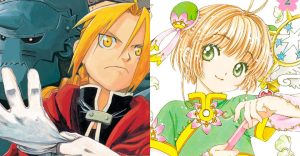Avatar: Every Known Member Of Last Airbender’s White Lotus
Avatar: The Last Airbender contains a secret group that transcends the boundaries of the four nations – the Order of the White Lotus – and here’s every member. Although several characters hint at the organization’s existence throughout seasons 1 and 2, the White Lotus does not truly unveil itself until it is time to defeat Fire Lord Ozai. Given the Order of the White Lotus’s stance in the war, it is unsurprising that the members are revealed to be characters who were kind and helpful to Aang throughout Avatar: The Last Airbender.
The White Lotus is devoted to seeking “philosophy, beauty, and truth,” as well as spreading this knowledge regardless of political divisions. The ancient secret society has taken on different goals throughout time, with protecting and training the Avatar being one of its primary tasks. In The Legend of Korra, the White Lotus guarded the world’s most dangerous criminals.
Many of Avatar: The Last Airbender‘s older characters turned out to be members of the White Lotus. To communicate their status to other suspected members, they use a particular strategy in the game Pai Sho. Members will place the tiles in a bloomed lotus-bud formation, with the key White Lotus chip in the center. But who are all of the members of the White Lotus?
Iroh

Iroh is the White Lotus’s Grand Master and Grand Lotus, giving him the power to unite the Order. Iroh led the group as they liberated Ba Sing Se, using Sozin’s Comet to empower his firebending. Up until this point, the White Lotus went to great lengths to maintain secrecy, but they sacrificed their low profile to help fight in the war.
Avatar: The Last Airbender foreshadows Iroh’s membership prior to the group’s reveal. Zuko is often frustrated by the amount of time Iroh spends playing Pai Sho, but Iroh insists that it is “more than just a game.” In season 1, Iroh confuses Zuko by changing course to find a Lotus tile. He explains that the Lotus tile is “essential for the unusual strategy” he employs – a reference to the Pai Sho formation that White Lotus members use to communicate.
Bumi

King of Omashu and an earthbending master, Bumi is another high-ranking member of the White Lotus. At 112 years old, Bumi was one of Aang’s closest friends before the Avatar went missing. Given his close relationship with Aang, it makes sense that he is the first to notice that Aang is missing when the White Lotus reveal themselves.
Prior to fighting alongside the White Lotus in the liberation of Ba Sing Se, Bumi liberated Omashu. During the Day of Black Sun, firebenders were rendered powerless by the eclipse – allowing Bumi to free himself and his city. Despite his old age, Bumi is a formidable earthbender and an asset to the White Lotus, using his skills to destroy Fire Nation weapons.
Fung

Fung may not be a high-ranking member of the White Lotus, but he plays a vital role in Avatar: The Last Airbender‘s introduction of the society. While Iroh and Zuko are traveling through Misty Palms Oasis, Iroh seeks out assistance from the Order. Zuko watches as Iroh plays a game of Pai Sho with Fung and forms the secret bloomed lotus formation. Fung tells Iroh, “The White Lotus opens wide to those who know her secrets,” revealing the White Lotus to both Zuko and the audience.
Shortly after the Order’s reveal, Fung protects Zuko and Iroh from bounty hunters trying to capture them. Later, he helps Iroh and Zuko obtain passports and travel to Ba Sing Se. Through Fung, Avatar: The Last Airbender efficiently displays the loyalty between members of the White Lotus. This set-up has substantial pay-off in season 3, as it primes the audience to learn of the existence and power of the White Lotus.
Jeong Jeong

A firebender who turned against the Fire Nation, Jeong Jeong is known as The Deserter. His membership in the White Lotus is only one indicator of his disillusionment with the Fire Nation, as he was also Aang’s first firebending master in season 1. His initial hesitance to teach Aang was not due to Fire Nation loyalty, but because he was afraid Aang would misuse it.
Jeong Jeong was widely regarded as a firebending prodigy and taught the element to many young soldiers, including Zhao. After seeing how his teachings were used for evil and destruction, Jeong Jeong defected from the Fire Nation and stopped teaching – until he met Aang ten years later. Given his feelings towards the Fire Nation, it makes sense that he would become a member of the White Lotus and help liberate Ba Sing Se despite his nationality.
Piandao

Avatar: The Last Airbender first introduced Piandao as Sokka’s swordmaster, and he ultimately fights to liberate Ba Sing Se. A highly sought after teacher, Piandao chooses Sokka as a pupil due to his humility. Since Piandao is a citizen of the Fire Nation, Sokka initially tries to hide that he was from the Water Tribe – but this ultimately turned out not to be a problem.
Piandao is unfazed by Sokka’s nationality. He explains that he knew as soon as they met that Sokka was from the Water Tribe, but that “the way of the sword doesn’t belong to any one nation. Knowledge of the arts belongs to us all.” This attitude is befitting of a member of the White Lotus, as one of the organization’s core values is that knowledge should transcend national boundaries and divides.
Pakku

A waterbending master the Northern Water Tribe, Pakku initially seems like an unsympathetic character. He refuses to teach Katara waterbending because of her gender, a rule that angers both Katara and Aang. However, he ultimately makes an exception after witnessing Katara’s natural talent and discovering that he nearly married her grandmother.
Pakku’s willingness to rethink his sexist beliefs makes his membership as a member of the White Lotus believable. The Order is devoted to sharing knowledge regardless of nation, and that same logic can be applied towards gender. With his wisdom and exceptional waterbending skills, Pakku is a crucial member of the Order of the White Lotus.
Jinpa

Jinpa does not appear in Avatar: The Last Airbender but in The Rise of Kyoshi and The Shadow of Kyoshi. However, he was one of the most devoted and important members of the White Lotus. A monk from the Southern Air Temple, Jinpa was essential to Avatar Kyoshi’s journey as a character.
When an Earth Kingdom boy was falsely identified as the Avatar, Jinpa went to great lengths to help Kyoshi become recognized as the real Avatar. He became Kyoshi’s secretary and assisted her in maintaining balance, remaining loyal even when her actions conflicted with his Air Nomad pacifism. Through Jinpa, the audience can see that the White Lotus has always been committed to protecting the Avatar.
Xai Bau

Like Jinpa, Xia Bau does not appear in Avatar: The Last Airbender; instead, he is a character in The Legend of Korra. Xai Bau stands out from other members of White Lotus in that he is the only character to leave the Order. After the end of the war, Xai Bau was unhappy with the White Lotus and believed that the organization had lost sight of its goal.
Xai Bau’s primary problem with the White Lotus was that it publicly unveiled itself and admitted to serving the Avatar. Focused on maintaining peace, Xai Bau created a new organization: the Red Lotus. When the White Lotus is revealed in Avatar: The Last Airbender, it may seem like a problem-free organization, but Xai Tau’s character arc proves otherwise.
Unnamed Members

Not every member of the White Lotus is fully identified. In the Legend of Korra, the current leader of the White Lotus appears in several episodes but is never named. The audience knows that he is a water bender and is dedicated to protecting Korra, but little else about his character is revealed. The White Lotus also has sentries, lower-ranking members of the Order. A helmet with a White Lotus insignia distinguishes them, as high-ranking members do not wear these. Despite being nameless, these sentries play an essential role in carrying out plans and protecting the Avatar.
The existence of the White Lotus adds complexity to the notion of heroes versus villains. Avatar: The Last Airbender has always argued against the idea that countries are morally monolithic, showcasing many Fire Nation citizens who are righteous despite their government’s actions. By including multiple White Lotus members from the Fire Nation, the Order’s membership supports this theme and displays a loyalty towards an idea rather than a country.
A society with a rich and intriguing history, the White Lotus is a fascinating factor at play in the Avatar universe. Although they only appear near the end of Avatar: The Last Airbender, other installments of the show’s world take advantage of the Order’s intrigue and build on it. With its diverse membership, root purpose, and internal problems, the existence of the White Lotus is both narratively and thematically crucial to Avatar: The Last Airbender.
About The Author

















